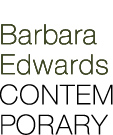![]()
Roald Nasgaard, O.C.
SILENT SCARS: The Late 60s Paintings of Sorel Etrog
SATURDAY JUNE 17, 2023 @2pm
Reception to Follow
BEC Project Space
315 King Street West, 2nd Floor
Toronto, ON M5V 1J5
Exhibition Hours: THU to SAT 1 to 6
(or by appointment)
RSVP to barbara@becontemporary.com as space is limited
Roald Nasgaard, O.C, is the author of the critically acclaimed book, Abstract Painting in Canada. His major exhibitions and accompanying books include The Mystic North: Symbolist Landscape Painting in Northern Europe and North America 1890-1940; the first Gerhard Richter retrospective in North America; The Automatiste Revolution: Montreal 1941-1960; The Plasticiens and Beyond: Montreal 1955-1970; and Higher States: Lawren Harris and his American Contemporaries. He co-curated Mystical Landscapes for the Art Gallery of Ontario and the Musée d’Orsay, He has forthcoming books on Eli Bornstein and Charles Gagnon. Considered one of the foremost authorities on Abstract Painting in Canada, Nasgaard will offer his personal perspective on this poignant moment in Etrog's history expressed through a body of hitherto never exhibited paintings.
In 1967 Romanian born Canadian artist Sorel Etrog (1933 – 2014), was at the height of his career. It was at this time, just as he reached the pinnacle by representing Canada at the prestigious 33rd Venice Biennale (1966) and his future seemed limitless, that he was involved in a serious car accident. During the long period of recovery that followed, Etrog slipped into a deep depression that brought back the horrors of his childhood in Romania during World War II.
The artist was only eight years old when more than 13,000 Romanian Jews were massacred in his hometown of Iași in a series of pogroms, carried out by followers of Romanian fascist dictator Ion Antonescu. Miraculously, his family survived the pogroms and the war but had to live through the hardship that followed under Soviet occupation. The terror and helplessness Etrog had experienced as a child left him scarred and deeply affected him throughout his life. This trauma was revisited in the shock of the accident and by what he had seen as an existential threat to the one thing that had sustained him, his art.
While Etrog’s sculpting abilities were limited, he embraced painting and between 1967 and 1969 created a large number of oil paintings that have left us an indelible record of the artist’s arduous journey from painful memories of cultural oppression and genocide to a renewed faith in human connection and the hope of community.
Feelings of despair dominate Etrog’s paintings of this period. A dark nightmarish palette persists and the artist’s preoccupation with themes of violence, victimhood rage and sorrow gives way to a profound understanding of our human condition. The bull, mother and dead child and the scream emerge as consistent motifs in this period, an expression of victimization at human hands. Unlike the defiant bull of Picasso’s Guernica, Sorel Etrog’s bull is a magnificent innocent being led helplessly to slaughter, a metaphor for the senseless violence of unprovoked genocide. The motif of a dead son in the arms of his mother brings to mind the familiar pieta, an art historical reference that connotes the deepest anguish imaginable, the loss of a child and therefore the loss of one’s continuance. The rage Sorel Etrog experienced in the face of these realities finds its fullest expression in the scream – a theme that harkens back to Edvard Munch’s famous painting The Scream of 1893, which embodies the existential angst at the very root of Etrog’s depression.
In an attempt to reconcile these disturbing memories, Etrog further developed the link element. While it was used in a more abstract form of connectivity before the accident, Etrog began to employ the link to depict human and animal organs, bones and ligaments. Those were often distorted, broken and tormented, symbolizing the darker side of our humanity. However, alongside this horrid display of pain and suffering, the same link element is used in a way that suggests human connection and community, the resolution for all conflict and separation. The palette in some of these more hopeful paintings shows an evolution from the dark and cold shades to brighter and warmer colours, contributing to a sense of optimism and healing.
This exhibition is a timely examination of some of Etrog’s most powerful and compelling paintings, concerned with themes that are especially relevant today in the context of the war in Ukraine. As we dedicate this year of programming to “Art in the Time of Conflict” Etrog’s works continue to resonate as they remind us of the complexity of our human experience of good and evil, trauma and transcendence.
“In the end, man is not entirely guilty—he did not start history. Nor is he wholly innocent—he continues it.” Albert Camus
Co-Curated by Jonathan Gendler & Barbara Edwards
A portion of the proceeds from this exhibition will support the Freedom Heart Ukraine Initiative in order to assist Ukrainians displaced by war and to promote Ukrainian culture.
Special thanks to The Danyliw Foundation and the Estate of Sorel Etrog for their generous support of this exhibition.
For more information, contact:barbara@becontemporary.com
